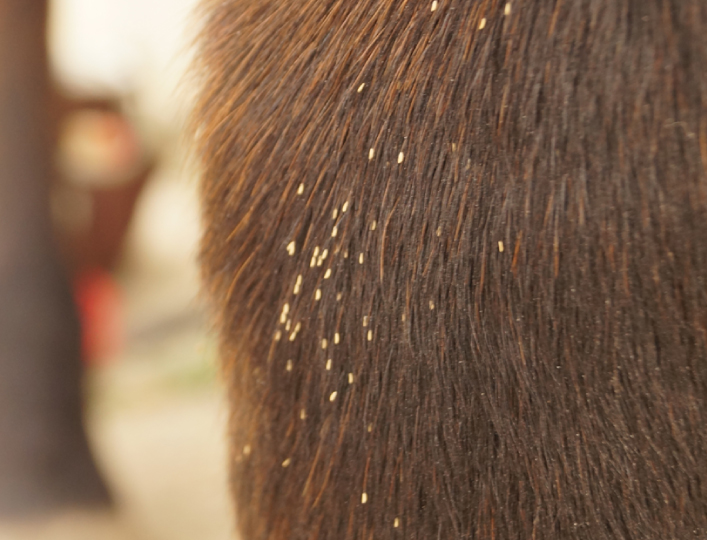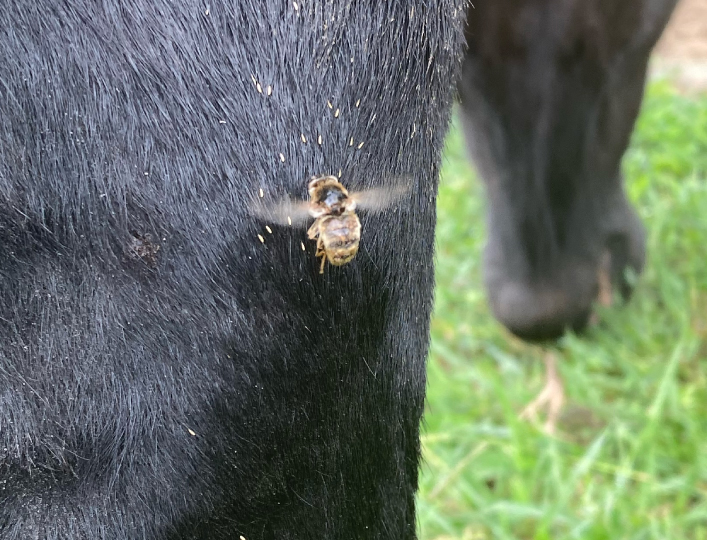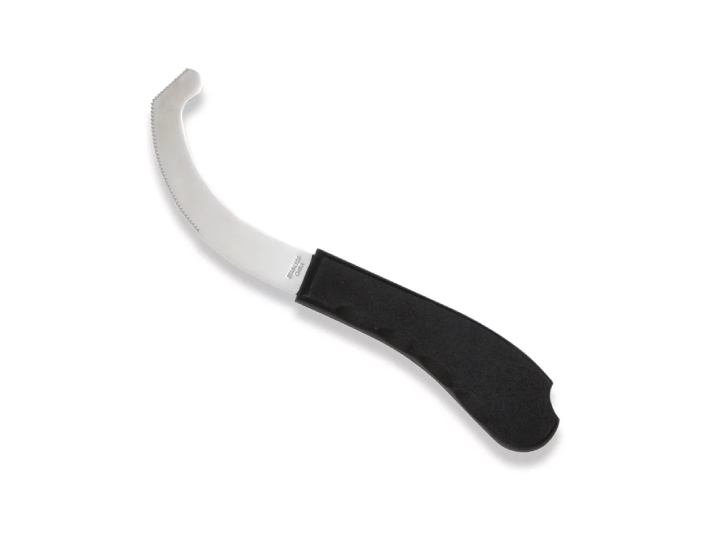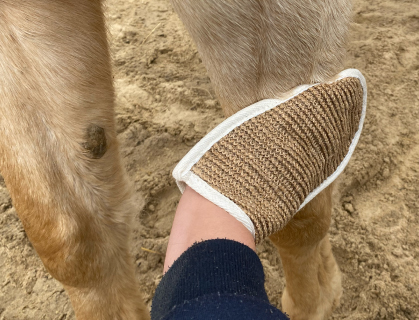Fly eggs on horse
They're usually so sticky that they stay on the coat despite showering or brushing. Yet removing them regularly is crucial to your horse's health.
Adult bots have atrophied mouthparts, so they don't feed. After mating, the females' sole purpose is to lay their eggs on their host's hair. Their larvae, on the other hand, are formidable parasites, specific to equids. Gastrophiles are active from late spring to autumn. They can be observed during the day, especially in the hottest hours, on equids living in pastures or paddocks.

The female lays hundreds of yellowish eggs, which she attaches to the hair as she flies. Egg-laying sites are usually the limbs, shoulders or head. These eggs can remain alive for several months. Scratching and licking cause them to hatch. The L1-stage larvae then migrate into the mouth and nostrils and penetrate the mucous membranes, where they remain for a month before migrating to the stomach and intestines. Internal damage can be considerable.

Fly knife
To remove them, there are many mechanical tricks.
- The first, which has proved its worth, is the use of a fly knife, which can be used every day to remove the eggs without risk of injuring the animal.
- The second is to use a hand razor to cut the hair on which the eggs are stuck. But be careful when handling the razor, and watch out for cuts, especially at this time of year when horses are moving their legs a lot because of the insects.
No product is available or proven to prevent the use of knives or razors.


It's very difficult to prevent horse flies from laying eggs on your horse.
DERFLY-type insect repellents on legs and egg-laying areas can limit the risk, but nothing is 100% guaranteed. Remember to apply with a glove (it penetrates better and lasts longer).
 ANIMADERM S.A.S
ANIMADERM S.A.S
